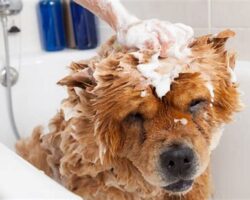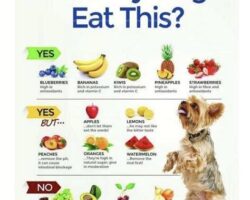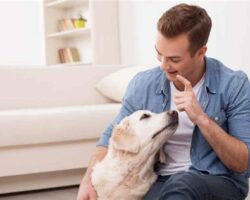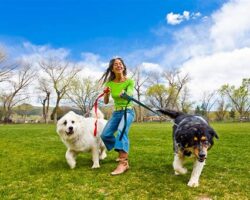Preventing accidents: Keeping your dog safe
When it comes to our furry friends, their safety is always our top priority. As dog owners, it’s essential to take proactive measures to prevent accidents and keep our beloved pets safe. Whether it’s at home or while on the go, there are several steps we can take to ensure the well-being of our dogs. In this blog post, we will explore some valuable tips and strategies to prevent accidents and provide a safe environment for our canine companions.
First and foremost, it’s crucial to secure your home and make it dog-friendly. Dogs are naturally curious creatures, so it’s important to minimize potential hazards within our living spaces. List:
- Keep toxic substances like cleaning agents, chemicals, and medications out of your dog’s reach.
- Secure electrical cords and tuck them away to prevent chewing.
- Ensure that all household plants are non-toxic for dogs.
- Keep trash cans securely closed to prevent your dog from accessing harmful items.
- Provide safe and comfortable areas for your dog to rest and play, with ample access to fresh water.
Additionally, when it comes to preventing accidents outside the home, it’s essential to prioritize leash training and supervision. Proper training helps control your dog’s behavior and prevents them from running into dangerous situations. Maintain a strong grip on the leash and avoid areas with heavy traffic or potential hazards. Always keep a keen eye on your dog, even in off-leash areas, to spot any potential dangers and address them promptly.
| Holiday hazards | Prevention tips |
|---|---|
| Unsafe food | Refrain from feeding your dog harmful foods like chocolate, grapes, onions, or caffeine. Stick to dog-friendly treats and meals. |
| Holiday decorations | Avoid using decorations that could be harmful if ingested, such as tinsel or glass ornaments. Opt for pet-friendly alternatives. |
| Increased stress | Provide a quiet and safe space for your dog to retreat to when holiday festivities become overwhelming. Consider using calming techniques like pheromone diffusers or gentle music. |
In conclusion, preventing accidents and maintaining the safety of our dogs should be of utmost importance to every pet owner. By creating a dog-friendly environment at home, leash training, and being aware of potential holiday hazards, we can ensure the well-being and happiness of our furry companions. Remember, an ounce of prevention is worth a pound of cure when it comes to keeping our dogs safe.
Creating a dog-friendly holiday environment
Creating a dog-friendly holiday environment is essential to ensure that your furry friend feels comfortable and safe during the festivities. Dogs are part of the family and deserve to be included in the holiday celebrations. By taking a few precautions and making a few adjustments to your home and routines, you can create a joyful and stress-free environment for both you and your beloved pet.
First and foremost, it’s important to establish a designated space for your dog during the holiday season. This could be a quiet room, a cozy corner, or a comfortable crate where your dog can retreat to when they feel overwhelmed or tired. Make sure this space is equipped with their bed, toys, and fresh water.
Next, be mindful of the decorations you choose and where you place them. Avoid using any decorations that could be hazardous to your dog, such as ornaments that can be easily swallowed or tinsel that can cause digestive issues if ingested. Keep fragile decorations out of your dog’s reach to prevent accidents or injuries. Opt for pet-friendly decorations, such as unbreakable ornaments or fabric-based decorations.
- Avoid using toxic plants like mistletoe, holly, or poinsettias as they can be harmful if ingested by your dog.
- Secure your Christmas tree so it doesn’t tip over if your dog gets too curious. Consider using a sturdy tree stand or anchoring it to the wall.
- Keep electrical cords out of reach or hidden to prevent your dog from chewing on them. This will help prevent electrical shocks or other injuries.
In addition to decorations, be mindful of the food you offer your dog during the holidays. While it may be tempting to share your festive feast with your four-legged friend, some holiday foods can be harmful or even toxic to dogs. Avoid giving your dog any chocolate, alcohol, onions, garlic, grapes, raisins, or any food with artificial sweeteners. Stick to dog-friendly treats and consult your vet if you’re unsure about what is safe for your dog to consume.
| Safe Food Choices for Dogs | Foods to Avoid |
|---|---|
| Lean and unseasoned cooked turkey or chicken | Chocolate |
| Plain steamed or baked sweet potato | Alcohol |
| Green beans (without added salt or seasoning) | Onions and garlic |
Lastly, be mindful of the noise and activity levels during holiday gatherings. Some dogs may become anxious or stressed with loud noises, crowds, or unfamiliar people. Provide a quiet retreat for your dog during parties or busy events. Consider using white noise machines or calming music to create a soothing environment. If your dog is particularly sensitive to noise, consult with your vet about possible anxiety-relief strategies.
Remember, the holiday season should be a time of joy and togetherness for the whole family, including your furry companion. By creating a dog-friendly holiday environment, you can ensure that your dog feels loved, secure, and comfortable throughout this festive time.
Safe food choices for your furry friend
When it comes to our furry friends, keeping them safe and healthy is always a top priority. This is especially true when it comes to their diet. As responsible pet owners, it’s important to be aware of the foods that are safe for our dogs to consume and those that can be harmful or even toxic to them. In this blog post, we will discuss some safe food choices for our furry friends, ensuring that they enjoy a nourishing and delicious diet.
First and foremost, it’s essential to understand that some human foods can pose a threat to our canine companions. Foods such as chocolate, grapes, raisins, onions, and garlic can be extremely toxic to dogs and should be strictly avoided. These can cause symptoms ranging from vomiting and diarrhea to more severe conditions like kidney failure. It’s crucial to keep these harmful foods out of their reach and educate ourselves on what is safe for them to consume.
So, what are some safe and healthy food choices for our furry friends? Here is a list of dog-friendly foods that can supplement their diet with essential nutrients:
| Food | Benefits |
|---|---|
| Lean Meats (e.g., chicken, turkey) | Provide high-quality proteins and essential amino acids |
| Fruits (e.g., apples, blueberries) | Offer vitamins, minerals, and antioxidants |
| Vegetables (e.g., carrots, green beans) | Supply fiber and promote digestive health |
| Plain Yogurt | Serve as a probiotic and support gut health |
| Pumpkin | Aid in digestion and provide a source of fiber |
While incorporating these safe food choices into our dog’s diet, it’s necessary to do so in moderation and consider their individual dietary needs. Some dogs may have specific food allergies or sensitivities, so it’s advisable to consult with a veterinarian before introducing any new foods into their routine. Additionally, certain breeds may have different nutritional requirements, so it’s essential to tailor their diet accordingly.
In conclusion, ensuring safe food choices for our furry friends is vital for their overall well-being. By being aware of the foods that are safe for them to consume and those that can be harmful, we can provide a nutritious and balanced diet for our beloved pets. Remember to always prioritize their health and consult a professional if you have any concerns or questions regarding their diet. Let’s keep our furry friends healthy and happy!
Managing holiday stress in dogs
The holiday season can be a joyful time for humans, but it can also bring about stress for our furry friends. Just like us, dogs can experience anxiety and tension during this busy period. As responsible pet owners, it is important for us to recognize and address their stress levels to ensure their well-being. Let’s explore some effective strategies to help manage holiday stress in dogs.
1. Stick to a Routine:
One of the best ways to alleviate stress in dogs is by maintaining a consistent routine. The holiday season often disrupts their regular schedule, which can lead to anxiety. Make an effort to feed your dog at the same time each day and ensure they have a designated quiet area where they can retreat to for relaxation. By providing them with a sense of stability and predictability, you can help lower their stress levels.
2. Create a Calming Environment:
Dogs are highly sensitive to their surroundings, so it’s essential to create a peaceful and stress-free environment for them during the holidays. Minimize loud noises and sudden bursts of activity that can startle or overwhelm your dog. Additionally, consider using calming aids such as pheromone diffusers or soothing music specifically designed for dogs. These can help create a soothing atmosphere and promote relaxation.
3. Offer Mental Stimulation:
Engaging your dog’s mind with mental stimulation activities can redirect their focus from stress-inducing factors. Puzzle toys, interactive feeders, and training sessions can provide mental enrichment and help relieve anxiety. Incorporating playtime into their daily routine can also be a great outlet for excess energy, reducing their stress levels and promoting overall well-being.
4. Monitor Food and Treat Intake:
During the holiday season, it’s tempting to indulge our furry friends with special treats and table scraps. However, sudden changes in their diet can upset their digestive system and cause undue stress. Stick to their regular diet and consider providing them with healthy, dog-friendly alternatives to traditional holiday foods. Avoid feeding them chocolate, grapes, onions, or any other foods that are toxic to dogs.
Conclusion:
Holiday stress can affect our beloved canine companions, but by following these strategies, we can help manage and minimize their anxiety. Remember to stick to their routine, create a calming environment, offer mental stimulation, and monitor their food intake. By prioritizing their well-being during this festive season, you can ensure that your canine friend experiences a stress-free and enjoyable holiday.
Tips for traveling with your dog during the holidays
Traveling with your dog during the holidays can be both exciting and challenging. While it’s great to have your furry friend with you, there are several things you need to consider to ensure a smooth and safe journey. Here are some tips for traveling with your dog during the holidays to make the experience enjoyable for both you and your pet:
1. Plan Ahead: Before embarking on your journey, it’s crucial to plan ahead. Research pet-friendly accommodations, such as hotels or rental homes, and make sure they are suitable for your dog’s needs. Book in advance to secure your spot and avoid last-minute disappointments.
2. Pack Essentials: Just like you, your dog needs a travel kit. Pack essentials such as food, water, medications, treats, and their favorite toys. Don’t forget to bring their leash, collar with identification tags, and any necessary paperwork, including vaccination records.
3. Make Your Dog Comfortable: Traveling can be stressful for dogs, so it’s important to make them feel comfortable. Bring their bed or a familiar blanket to provide a sense of familiarity. Keep their crate or carrier well-ventilated and secure. Additionally, bring along some items with their scent, such as a piece of clothing, to help them feel at ease.
- 4. Plan Frequent Breaks: During long journeys, make sure to plan frequent breaks for your dog to stretch their legs and relieve themselves. Stop at designated pet areas or use a leash to take them for short walks. This will keep your dog happy and prevent any accidents in the car.
| Mode of Transportation | Tips |
|---|---|
| Car | – Use a car restraint or a crate to keep your dog secure- Avoid letting your dog stick their head out of the window- Never leave your dog alone in a parked car |
| Plane | – Check the airline’s pet policy and regulations beforehand- Ensure your dog meets the required crate specifications- Keep your dog’s health certificate and identification tags easily accessible |
| Train | – Familiarize yourself with the train company’s pet policy- Keep your dog on a leash or in a crate- Avoid peak travel times to minimize stress for your pet |
5. Ensure Safety: Your dog’s safety should be a top priority during the journey. Use proper restraints or crates when traveling by car, plane, or train. If your dog gets anxious during travel, consult with your veterinarian about anxiety-reducing options. Also, keep your dog away from open windows, and never let them roam freely in a moving vehicle.
6. Take Breaks from Driving: If you’re driving long distances, it’s essential to take breaks for both you and your dog’s well-being. Find pet-friendly rest stops or parks along the way where your dog can take a break, stretch their legs, and have some water and snacks.
7. Consider Your Dog’s Well-being: Remember that not all dogs are comfortable with travel. If your dog shows signs of distress or anxiety, it may be best to reconsider bringing them along. Leaving them in a familiar and trusted environment with a pet sitter or in a reputable dog boarding facility might be a better option.
By following these tips for traveling with your dog during the holidays, you can ensure a safe and enjoyable journey for both you and your pet. Happy travels!
Protecting your dog from holiday decorations
The holiday season is a time of joy and celebration, but it can also pose certain risks to our furry friends. As pet owners, it’s important to be aware of the potential dangers that holiday decorations can present to our dogs. While festive decorations bring cheer to our homes, they can also attract our dog’s attention and curiosity, putting them at risk of injury or illness. By taking some precautions and implementing safety measures, we can ensure that our beloved pets stay safe and happy during this festive season.
One of the primary concerns when it comes to holiday decorations is the risk of choking or intestinal blockage. Many decorations are shiny and bright, making them tempting for dogs to chew on or play with. Tinsel, for example, can be particularly hazardous. Its shiny appearance and texture can attract dogs, and if ingested, it can cause serious harm. To prevent accidents, it is crucial to keep decorations out of your dog’s reach or opt for pet-friendly decorations that are non-toxic and less likely to cause harm if chewed upon.
Another potential danger lies in electrical decorations such as Christmas lights. Dogs, especially puppies or those with a curious nature, might be tempted to chew on the cords or cables, posing a risk of electric shock or injury. It is essential to secure any electrical cords out of your dog’s reach or use cord covers to prevent them from being chewed. Additionally, ensure that all electrical decorations are in good condition and avoid overloading power outlets to minimize the risk of fires or electrical accidents.
In addition to choking hazards and electrical risks, certain holiday plants can also be toxic to dogs. Popular festive plants like poinsettias, holly, and mistletoe can cause stomach upset, skin irritation, or even more severe symptoms when ingested. To protect your dog, it is best to keep these plants out of the reach of your furry friend or opt for artificial ones instead. Be aware that even pine needles from Christmas trees can be harmful if swallowed, so make sure to clean up any fallen needles promptly.
- Prevent access to decorations: Keep fragile decorations, tinsel, or small ornaments that can be swallowed out of your dog’s reach.
- Choose pet-friendly decorations: Opt for non-toxic and pet-safe decorations to minimize any potential harm.
- Secure electrical cords: Tuck away cords or use cord covers to prevent dogs from chewing on them and avoid electrical accidents.
- Be cautious with holiday plants: Keep toxic plants out of reach or consider using artificial versions to eliminate the risk of ingestion.
| Hazards | Preventive Measures |
|---|---|
| Choking hazards (tinsel, small ornaments) | Keep decorations out of reach or use pet-friendly alternatives. |
| Electrical risks (Christmas lights) | Secure cords, keep them out of reach, and avoid overloading power outlets. |
| Toxic plants (poinsettias, holly, mistletoe) | Keep plants out of your dog’s reach or choose artificial ones. |
| Pine needles from trees | Clean up fallen needles promptly to prevent ingestion. |
To sum up, holiday decorations bring beauty and cheer to our homes, but they can also pose risks to our furry friends. By being aware of potential dangers and taking preventive measures, we can protect our dogs from harm. Remember to prevent access to decorations, choose pet-friendly alternatives, secure electrical cords, and be cautious with holiday plants. By prioritizing our dog’s safety, we can all enjoy a festive and joyful holiday season together.
Recognizing and preventing seasonal hazards for dogs
As pet owners, it’s our responsibility to ensure the safety and well-being of our furry friends, especially during the holiday season when there are numerous potential hazards lurking around. While we may get caught up in the festivities, it’s crucial to be aware of the seasonal hazards that can pose a threat to our dogs. By recognizing these hazards and taking preventive measures, we can ensure a safe and enjoyable holiday season for our beloved pets.
List of Seasonal Hazards:
1. Chocolate: During the holidays, chocolate becomes abundant in our homes. However, it is important to remember that chocolate is toxic for dogs. Keep all chocolate products out of reach from your furry friend.
2. Christmas Decorations: While twinkling lights and beautifully adorned trees create a festive ambiance, they can also pose a threat to our dogs. Ensure that all decorations, especially tinsel and ornaments, are securely fastened and out of your dog’s reach.
3. Plants: Several popular plants associated with the holiday season, such as poinsettias, mistletoe, and holly, can be toxic if ingested by dogs. Keep these plants in areas where your dog cannot access them.
Table: Common Seasonal Hazards for Dogs
| Hazard | Risk Level | Preventive Measures |
|---|---|---|
| Chocolate | High | Keep all chocolate products out of reach from your dog. |
| Christmas Decorations | Moderate | Securely fasten all decorations and place them out of your dog’s reach. |
| Plants | Low | Keep toxic plants like poinsettias, mistletoe, and holly in areas inaccessible to your dog. |
By being knowledgeable about these seasonal hazards and implementing preventive measures, we can keep our four-legged companions safe during the holidays. Remember to monitor your dog closely, ensure access to fresh water, and provide them with a quiet space to retreat to if the festivities become overwhelming. Let’s make this holiday season joyful not just for us, but also for our beloved furry friends!
Frequently Asked Questions
Question: How can I prevent accidents and keep my dog safe during the holidays?
Answer: There are several ways to prevent accidents and ensure the safety of your dog. First, make sure your dog is supervised at all times, especially around holiday decorations and toxic plants. Keep harmful substances, such as chocolate and alcohol, out of your dog’s reach. Also, create a designated safe space for your dog to retreat to when they feel overwhelmed or stressed.
Question: How can I create a dog-friendly holiday environment?
Answer: Creating a dog-friendly holiday environment is essential to keep your furry friend comfortable and stress-free. Start by avoiding loud noises and excessive holiday lights, as these can be overwhelming for dogs. Provide your dog with a quiet and peaceful place to rest, away from the hustle and bustle of holiday activities. Consider using dog-friendly decorations and avoiding any that could be hazardous or easily broken.
Question: What are some safe food choices for my dog during the holidays?
Answer: While it’s tempting to share holiday treats with your dog, it’s important to stick to safe food choices. Treats such as plain cooked turkey, pumpkin, and sweet potatoes can be a safe and enjoyable addition to your dog’s diet. However, be cautious of foods like chocolate, onions, grapes, and raisins, as they can be toxic to dogs.
Question: How can I manage holiday stress in my dog?
Answer: Holiday stress can affect dogs just as it does humans. To help manage your dog’s stress, establish a routine and stick to it as much as possible. Provide your dog with plenty of exercise and mental stimulation to help reduce anxiety. Additionally, consider using calming aids such as pheromone diffusers or anxiety wraps to help your dog relax during the holiday season.
Question: What are some tips for traveling with my dog during the holidays?
Answer: Traveling with your dog during the holidays requires careful planning. Before embarking on a trip, ensure that your dog is properly secured in a crate or with a seatbelt harness. Bring along familiar items such as their bed, toys, and food to help them feel more comfortable. Make frequent stops to allow your dog to stretch their legs and use the bathroom. Lastly, research pet-friendly accommodations and plan your route accordingly.
Question: How can I protect my dog from holiday decorations?
Answer: Holiday decorations can pose various hazards to dogs. To protect your dog, keep fragile ornaments and tinsel out of their reach, as they can be choking hazards. Avoid using toxic plants such as mistletoe and poinsettias in your decorations. Secure Christmas lights and electrical cords to prevent your dog from chewing on them. It’s also important to be cautious of open flames from candles or fireplaces, as they can cause burns or other accidents.
Question: What are some seasonal hazards for dogs and how can I prevent them?
Answer: During the holiday season, there are several hazards that dog owners should be aware of. These include toxic foods, increased stress levels, extreme weather conditions, and heightened activity around the house. To prevent these hazards, be mindful of what your dog has access to, keep them in a safe and secure environment, and ensure they have a quiet and comfortable space to retreat to. Consult with your veterinarian for additional guidance on how to protect your dog during the holidays.





